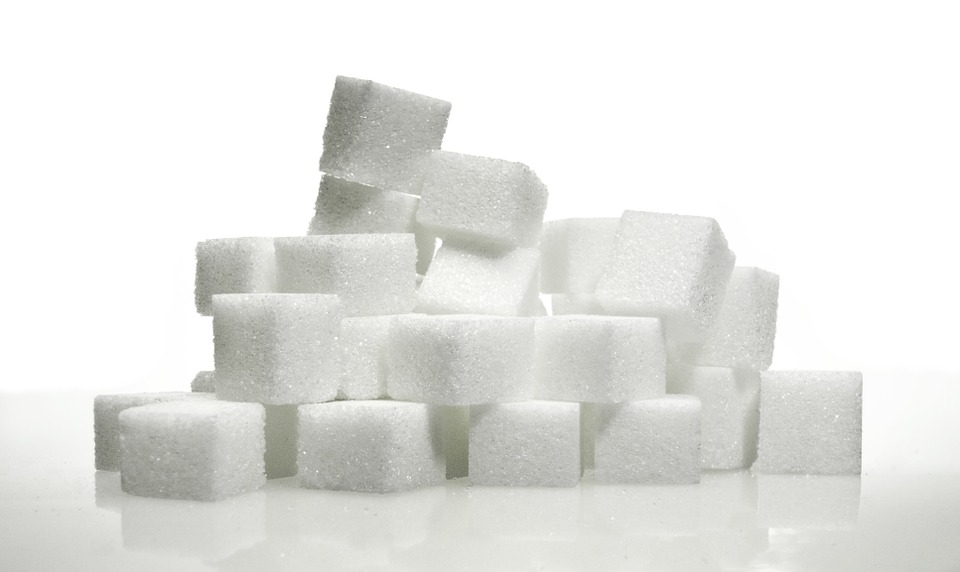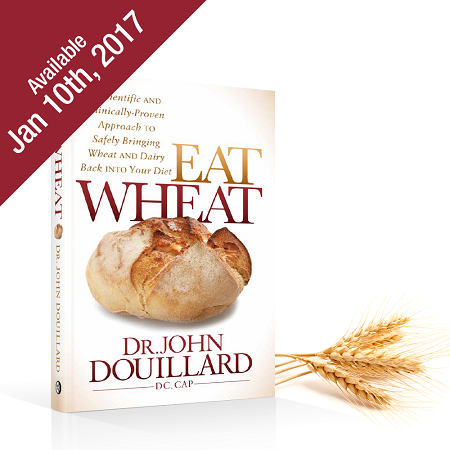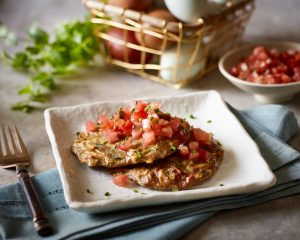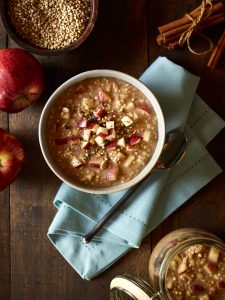7 Little Self Care Tips for Lazy People to Start Today

Before outlining our seven tips to start today, it is important to mention some key points about human psychology and the difference between goals and processes. Many believe that people are creatures of habit and conditioning, and not just at the mercy of their genes. The significance of this is that routines and procedures can be put into place which become habit over time and then further evolve into an everyday part of your lifestyle. With this in mind there are a number of tips and strategies which can be used in order to get more efficient and steadily progress. By performing habits everyday you can build up momentum such that it is eventually just something you do everyday, as opposed to a "task" which has to be completed
The importance of goal setting is mentioned in practically every single self-improvement manual ever written. Put simply if there are no goals then there will be nothing to work towards. Having a goal gives motivation, the anti-thesis to boredom, which gets you out of bed in the morning. One of the main purposes of life is to achieve goals. Lazy people cannot be lazy if they have goals, as goals are what sets lazy people apart from active, motivated people. Write down your goals and all you want to achieve. Sign it with your name. And stick it onto the wall. This means that your goals are now tangible, and you have committed to achieving them.
A process is something that you will do everyday. A lesser known tip is that in order to reach goals you have to set processes. A goal might be to write a Novel. A process might be to write your novel everyday, or to write 1000 words every day. You cannot fail to achieve a goal if you commit to doing processes everyday, as ultimately your goals will be achieved.
7 Little Self Care Tips for Lazy People to Start Today
The following are Seven self care tips for Lazy people. Some might seem obvious at first, however it is important to bear in mind that not everybody has the same levels of motivation or enthusiasm, and everyone is different. Make use of goals, processes and signatures to put the following tips into action and to integrate them as part of a healthy lifestyle.
Tip One – Exercise
Obviously you need your body in top physical condition. Use the goal/process/signature protocol mentioned above to exercise 3-4 times a week minimum. If you are sitting in front of a desk for 8+ hours a day looking at a computer monitor, then stretching is of the utmost importance, as well as fresh air. Exercise outside is best as nothing can trump fresh air, which will also help you sleep. There are several hit and tips on GGP about how to motivate yourself to work out for extended periods of time.
Tip Two – Unplug
In order to engage in maximum productivity it is best to know how the mind works. Study after study has proven that best results are achieved by 40-50 minutes of focused attention, followed by 10-15 minutes of focused relaxation. Thus even if you feel you could work for longer than 50 minutes it is best to stop for a few minutes, take a few deep breaths, relax completely and utterly and resume work after your relaxation period. Most people actually take their work with them on their break, as their work related thoughts keep replaying in their minds. This is counterproductive. Time off is essential for mental maintenance.
Tip Three – Establish a Healthy Morning Routine
A good breakfast will set you up for the day in terms of what you eat. But a good routine will set you up for the day in all ways. Establish a morning routine which incorporates a period of meditation, eating a healthy breakfast, looking at the goals you need to achieve and saying positive affirmations. This will put you into a positive mind frame for the day instead of just rushing out the door in the mornings in order to beat traffic and make it into work on time.
Tip Four – Skin Care
Skin Care is perhaps the most overlooked area of physical health. The skin is the largest organ in the body. However, little attention is paid to skin care. There are ample opportunities to absorb much needed nutrients through the skin. The shower is completely under utilized and is a prime opportunity to allow vital minerals to soak into your skin. The shower is the ultimate form of skin care. Get an organic, high quality body lotion and just allow it to soak in. Your skin is “eating” the lotion in the same way that the mouth “eats” food. It is also very important to be aware of what types of skin products your skin care regime includes – makeup, sunscreen and hand lotions often contain harmful chemicals. Organic is best.
Tip Five – Eat healthily
This means an increase of fruits and vegetables, and a decrease in animals and animal products. It does not have to be a big deal, you can just give up sugar, alcohol and processed foods at a moment's notice. Simply stop eating them now and put focus towards eating healthy. 21 days is the time it takes to establish a habit. Thus if you can manage to eat a certain food for this time period it will no longer be a strain, it will be incorporated as part of your lifestyle.
Tip Six – Drink Clean Water
Aside from skin care this is perhaps the most overlooked area of physical well being. The advice to drink lots of water is well known. What is perhaps lesser known is that the quality of water indicates if you should be drinking it in the first place. A water meter can be purchased on Amazon for $10. The difference between drinking water with 0 Parts Per Million(PPM) and 200 PPM is quite literally the difference between drinking water that is pure and water that is poisonous. Most bottled water has PPM in the range of 200+. Test your shower water as well as the skin is efficient at absorbing water.
Tip Seven - Destress
Stress is touted often as the main cause of disease and mental illness. There is never any reason to stress. Even if it's a self help tip such as to drink clean water, do not stress if you cannot put the tip in practice right now. Do what you can when you can and don't stress about the rest.
Above are 7 tips which can be put into practice today. Right now. Set out goals immediately and identify what you want and how to achieve it. It is ultimately the only way to conquer laziness and boredom and to achieve your desires.
What’s Not So Sweet About Sugar? - Guest Blog

By now you’ve probably heard that sugar isn’t good for you, but do you know exactly what that means? Many people don’t understand why exactly sugar is detrimental to their health, and they’re not sure how to limit the amount of sugar they consume.
If you want to learn more about sugar’s effect on your brain and body, read on for more information about its harmful effects and tips to avoid it.
Obesity
Scientists have been telling people for some time that obesity rates are rising in both children and adults, and much of this rise can be attributed to excess sugar in the American diet. Whether it’s soft drinks, pizza, or fast food meals, sugar is added to almost every processed food that people eat. Constant sugar consumption leads to a higher calorie intake, which leads to weight gain.
Even worse, sugar has no nutritional value. There are no vitamins or minerals in sugar and no essential nutrients that contribute to your daily diet. Since you should only eat a limited number of calories each day, making sure all your calories are nutritionally dense and worthwhile is a crucial aspect of a healthy weight.
Addiction
If it were easy to give up sugar, everyone would do it, but it’s not easy, and for some people, sugar is just as addictive as alcohol or drugs. In fact, for people with addiction issues, lessening their sugar intake isn’t enough. Just like an alcoholic or drug addict, they need to abstain from sugar entirely or risk being pulled back into addiction.
Even if you aren’t addicted to sugar yet, you should definitely be concerned about its addictive properties. Avoid it like you avoid cigarettes or other harmful drugs.
Disease
Excess sugar in the diet can lead to Type II diabetes, and it can also be responsible for many other conditions, including:
- High blood pressure
- Fatty liver disease
- Metabolic disorder
- Insulin resistance
Don’t forget that sugar also causes tooth decay, which can lead to painful and expensive dental procedures. If you need a little extra encouragement, do an internet search for tooth decay or fatty liver to get a sense of what excess sugar can lead to.
Read Labels

Sugar is hidden everywhere. Without reading the label or requesting nutritional information, you might not know that there’s sugar in many of the products you eat every day including:
- Jarred tomato sauce
- Canned soup
- Fat free salad dressing
- Barbecue sauce
- Multi grain crackers
- Fast food French fries
Educate yourself, so you know all the ingredients in what you’re consuming. Once you know exactly what you’re eating, you’ve taken the first step on your journey to make healthy decisions.
Substituting Fruit
If you have a sweet tooth, try substituting fresh fruit (not dried fruit) for other sugary treats. While fruits may contain sugar, it’s a different type of sugar. More importantly, fruits are nutritionally valuable, unlike simple sugar, and contain many vitamins and minerals. The fruit fiber helps to moderate how the body responds to sugar and blood sugar isn’t spiked so quickly or so high when fruit sugar is introduced with fruit pulp and fiber.
Be aware that fruit juice isn’t the same as whole fruit. While it does have vitamins, it lacks the fiber of whole fruit and often has added sugars as well.
Talk to Someone
Because sugar is in so many foods and has such a strong pull on many people, it might be helpful for you to talk to someone. Whether it’s a psychologist, nutritionist, or life coach, talking to an expert can help you understand the addictive properties of sugar and why it’s so important to cut it out of your life.
Taking a holistic approach to controlling sugar and improving your diet makes sense if you consider that this is a life change to improve your health, not just a temporary diet fix.
Curbing Cravings
Evidence has shown that some natural supplements curb sugar cravings. If you’re not having luck cutting sugar out of your diet on your own because of your intense cravings, try nutritional supplements. Check with your doctor and ask if the following might help you control your sugar cravings:
- L-glutamine
- Magnesium
- Chromium
Eating Better
Now that you have some information regarding the harmful effects of sugar, go ahead and research the ways in which you can live a healthier, less sugary life.
Author Bio:
Carl Turner is a freelance writer and a health enthusiast from Los Angeles, California. With his expertise in health and medicine, he enjoys helping his clients reach their optimal health. When he is not busy with work, he publishes informative articles on news and media outlets around the world.
Image 1: https://cdn.pixabay.com/photo/2014/11/28/09/08/lump-sugar-548647_960_720.jpg
Image 2: https://c1.staticflickr.com/9/8724/17098092451_0ecb4d2479_b.jpg
Eating Healthy And On A Plan Is Empowering

So this in between time that I had from the end of my last competition until starting my new prep at 21 weeks out was strange. For so long I had always had a meal plan to follow with a cheat given to me every weekend. It was a pattern. I had gotten use to it. I enjoyed it. Although for quite some time I have to admit I was resistant to it. In the beginning I felt deprived. And honestly I look back at it and it was mostly because I follow a lot of IIFYM people online. Although I am a firm believer there is not just one way to achieve goals IIFYM is not for everyone. For me personally - Following Macros is great if you like flexibility, are good with numbers and are organized. I also find that a lot of IIFYM focus more on macros and not micros and personally I think its ridiculous to count vegetables as carbs. I don't even track vegetables. ANYWAYYYY enough ranting....Eating Healthy And On A Plan Is Empowering.
Why? Because I know what I need to eat, when I need to eat it and exactly how much. Ive never been good with numbers so I don't have to stress out about them. I don't have to calculate and take time out of my day to figure out meals. But for me its also helpful in a social setting. I can order exactly what I need. I can also easily pack meals for travel. Its simple. My coach does the work and I do the work in the real world.
Its also empowering. How? I go to events or a restaurant I have self control and make healthy choices based on my plan. I also find it more rewarding to follow my plan all week and reward myself with a cheat on the weekends. Its even better to enjoy the cheat with my boyfriend than shoving some terrible snack down my throat. Its simple: follow the plan. Get the results. Deviating from the plan you are only cheating yourself.
I was at one vent recently and saw all these people eating multiple muffins because they were labelled "organic" and "healthy." This was probably furthest from the truth though. All I could think of was yummmmmy but then I thought "you know what...abs are more of a reward than the quick little taste." Health over quick satisfaction with no rewards is so powerful. Was I always like this? No. It takes mental toughness. Am I sometimes weak? Yes. Im not perfect. But when I make the best decision I am a happier and healthier person.
If you need help and are willing to follow a plan I am precision nutrition certified and would love to help you reach your goals. Send me an email: alicia@trainitright.com or head on over to my site: www.trainitright.com/contact
Let Them Eat Wheat! Using Ancient Wisdom/Modern Science to Overcome Food Intolerances - Book Review

I was recently sent a book by Dr. Jon dullard to review. The title of the book was Eat Wheat - A scientific AND Clinically-Proven approach TO Safely Bringing Wheat AND Dairy Back INTO your diet.
What I loved about the book: Its based on scientific facts that he has used with thousands of patients to help them cure their food intolerances. This book is a real eye opener and a must read for fitness and health enthusiasts or anyone that has dietary issues/intolerances. Its great also because it is evidence based.
I also enjoyed that he discussed the underlying cause of the gluten-free explosion. And that he goes on to discuss that when you eliminate wheat and dairy fro your diet it may illuminate your symptoms but it may also be a temporary solution.
This book is also a great read because it helps you learn how to navigate around food toxins in modern what and dairy and reveal the hidden science on the benefits of wheat and dairy. Through this he helps you see that you can retrain your body to digest wheat and dairy again. These things are very applicable for health but for bodybuilding and aesthetics it does not 100% apply in my opinion.
Has gluten been found guilty without a fair trial? It wouldn't be the first time an innocent food was given a life sentence. For example, after almost 60 years of so-called "hard science" condemning cholesterol, we now find out that the science was flawed and high cholesterol saturated fats, such as butter, have been officially taken off the FDA's nutrient concern list. Is it possible that we have wrongfully given gluten the boot as well? Turns out, if you’re gluten-free or dairy-free, you might not have to be!
Eat Wheat: A Scientific and Clinically-Proven Approach to Safely Bringing Wheat and Dairy Back into Your Diet (Morgan James, January 2017) by Dr. John Douillard, DC, CAP, addresses this timely topic of food intolerances. After 3.4 million years of eating wheat and only 500,000 years of hunting meat, through Eat Wheat, Dr. Douillard reminds us that humans are actually genetically better equipped to eat wheat than meat and the true Paleo diet, clearly, included glutinous grains like wheat and barley.Dr. Douillard is a former NBA nutrition expert and creator of LifeSpa.com.
He has spent the past 30 years and has seen more than 100,000 patients in his natural health practice, helping to improve their digestive systems and begin to eat wheat again.“The most common dietary advice doctors have been giving their ailing patients for the past 30 years is to stop eating wheat and dairy,” says Dr. Douillard. “It’s just not that easy. Helping folks navigate around the processed versions of wheat while rebooting the digestive system is simply absent in medical practice, while being gluten-free has become a movement. We are fooling ourselves to think that all of our problems will disappear by just avoiding wheat. For years, I’ve seen patients after they have stopped eating wheat and dairy, and while they almost always feel better initially, the symptoms all too often return, leaving them with hardly anything to eat. With Eat Wheat, we can do better.”
Eat Wheat presents the science on the other side of the gluten-free aisle. For example, ancient wheat has been shown to have twice the gluten content of modern wheat yet decreased inflammation two-fold and lowered cholesterol and blood sugar.
So how could the more glutinous grain actually be healthier? In addition, wheat was a fall harvested grain that humans are well adapted to eating. Wheat digesting enzymes and microbes proliferate in the fall and winter to break down this so-called poison, gluten. So what is the real cause of America’s gluten sensitivity?
Eat Wheat explains how a breakdown in digestion has damaged the intestinal wall and leaked undigested foods and environmental toxins into the body’s lymphatic system, causing “grain brain” symptoms and food allergies. Although eliminating wheat and dairy from your diet may help your symptoms, it’s a temporary solution. The book addresses the root cause: the inability to digest well and break down harmful pollutants and toxins that can lead to more serious health concerns.Backed by more than 600 scientific studies, Eat Wheat is a revolutionary guidebook to regaining your digestive strength and safely bringing wheat and dairy back into your diet. It will also:
- Reveal hidden science on the benefits of wheat and dairy
- Help you navigate around food toxins in modern wheat and dairy
- Detail how to flush congested lymphatics linked to food intolerance symptoms
- Teach you to follow natural digestive circadian cycles
- Help bring your blood sugar back into balance
- Teach you proven exercise and detox techniques to reboot strong digestion and achieve optimal health and vitality
“Your digestive strength is the key to a long, healthy and vital life,” adds Dr. Douillard. “The choice as to whether or not you can eat gluten or dairy shouldn’t be decided for you because of weak digestion, it should be decided by you as a preference.”
Dr. John Douillard, DC, CAP, is a globally recognized leader in the fields of natural health, Ayurveda and sports medicine. Over the past 30 years, he’s helped over 100,000 patients repair their digestive system and eat wheat and dairy again. He is the creator of LifeSpa.com, a leading Ayurvedic health and wellness resource on the web with over 4.5 million views on YouTube. LifeSpa.com is evolving the way Ayurveda is understood around the world, with over 700 articles and videos proving ancient wisdom backed by modern science. Dr. John is the former Director of Player Development and nutrition advisor for the New Jersey Nets NBA team, author of six books, a repeat guest on the Dr. Oz show, and has been featured in Woman’s World Magazine, Yoga Journal, the Huffington Post and dozens of other publications.
For more information, please visit www.eatwheatbook.com,www.lifespa.com, and connect with Dr. Douillard on Twitter, Facebook and YouTube.
Eat Wheat will be released in ebook form on September 1, 2016, and in paperback and hardcover on January 10, 2017. It can be pre-ordered from Amazon, Eat Wheat Book and all major booksellers.
Banish Boring in the Morning with Breakfast Recipes to Celebrate Organic Week
September 17 to 25, 2016, marks this year’s National Organic Week, the largest annual celebration of organic food, farming and products across the country. With hundreds of events and thousands of retail promotions taking place across Canada, Organic Week showcases the benefits of organic agriculture and its positive impact on the environment, animal welfare, as well as our well-being. Supported by regional partners and coordinated by the Canada Organic Trade Association(COTA), Canadian Organic Growers (COG), and the Canadian Health Food Association (CHFA), Organic Week shines a spotlight on why Canadians should choose to think before they eat.
“With the number of organic products on the market continuously growing, it’s easier than ever to go organic,” says Rochelle Eisen, president of COG. Many of Canada’s top organic farms, wineries, retailers and restaurants take part in Organic Week, offering Canadians the perfect opportunity to experience firsthand the bounty of Canada’s organic harvest. “Whether it’s hosting a potluck picnic for friends or sampling organic wine and beer, we encourage Canadians to help spread the word about how choosing organic means supporting sustainability and promoting animal welfare.”
Some new and exciting trends have been revealed thanks to the Canada Organic Trade Association’s second national consumer survey to be released later this year. The study aimed to understand consumers’ awareness of the benefits of organic agriculture, uncover consumers’ organic purchasing habits and gauge the level of trust Canadians have in organic and non-organic claims.
Key findings from the study show:
The face of organic is changing as more “millennials” are shifting towards organic in Canada; one in five (twenty-one per cent) shoppers from 18 to 34 years say they are buying more organic, while shoppers in older age groups are holding steady.
Eighty-six percent of Canadians expect to increase or maintain their organic spending in the near future.
The number of consumers that are regularly buying organic in the country is around 20 million (fifty-six per cent of Canadians).
“Governments are following in the footsteps of consumer trends,” says Tia Loftsgard, Executive Director of COTA. “Federal investment in the organic sector and provincial initiatives supporting farmers to transition to organic show how consumer-led efforts can truly make a difference. We’re proud to be involved in the continued growth of the organic movement alongside its passionate ambassadors this September.”
More and more Canadians are looking to reduce their exposure to synthetic chemicals and genetically engineered (GMO) ingredients with the aim of taking better care of themselves, their families, and the environment. Coast-to-coast Organic Week events range in scale, from smaller organic farm tours to community-wide organic festivals. Hundreds of health food stores, farmer’s markets and grocery chains will be showcasing organic products and educating consumers.
“With events taking place in communities all over the country, there are so many ways Canadians can support and get involved in the Organic Week celebration,” says CHFA president, Helen Long. “Last year, we saw everything from pickling workshops and farm tours to recipe contests and organic food and drink tastings. These happenings represent the creative ways Canadians are choosing to go organic and how they are making a conscious decision to protect their bodies and the environment, all while supporting local farmers.”
To find out more about Organic Week events or promotions being offered near you, please visit organicweek.ca.
Organic Week was made possible this year by champion sponsors UNFI Canada, Sobeys Inc., Manitoba Harvest Hemp Foods, Nature’s Path Foods, Clif Bar & Company, alive Publishing Group Inc, PC Organics, Mike and Mike’s Organics, Cal-Organics Farms, Yorkshire Valley Farm, Green Organic Vegetables, Field Farm Marketing Ltd., DOM International Limited, Canadian School of Natural Nutrition, Earthbound Farm Organic, Wholesome!, True Organic Juice, DeeBee’s SpecialTea Foods, Mumm’s Sprouting Seeds, Ecocert Canada, Organic Meadow, Pacific Organic Seafood Association, Organic Garage, The Homemade Organics Company, Fromagerie L’Ancêtre, Pro-Cert Organic, Patience Fruit & Co, The Big Carrot, Hippie Foods, Ethical Bean Coffee, Quality Assurance International, and Fairtrade Canada.

Savoury Egg Pancakes
These easy and satisfying savoury pancakes are quick to reheat in the toaster and are packed with protein, fibre and omega-3 fatty acids. Try it in a wrap or with a salad for a light lunch.
Prep time: 10 minutes
Bake time: 15 minutes
Total time: 25 minutes
Yields: 12 pancakes
2 cups (500 mL) grated zucchini (about 2 small)
1 cup (250 mL) grated sweet potato (about 1 small)
3/4 cup (180 mL) whole wheat flour
6 eggs
1/2 cup (125 mL) ground flax seeds
1/2 cup (125 mL) rehydrated and finely chopped sundried tomatoes*
2 cloves garlic, finely minced
1 tsp. (5 mL) sea salt
1/4 tsp. (1 mL) pepper
Place all ingredients in a large bowl and stir to combine. Dollop 1/4 cup (60 mL) portions of mix onto a large parchment lined baking sheet and spread into 3-inch circles spaced 1-inch apart. Bake at 375F for 15 minutes or until bottoms are light golden brown. Let cool completely and layer with wax paper in between each pancake; freeze in an airtight container for up to 2 weeks. Reheat pancakes in a toaster or microwave. Serve with fresh salsa, hot sauce, hummus or avocado slices.
Tip: You can also cook these savoury delights in a cast iron skillet. Just reduce the cooking time by five minutes and make sure you add a little oil to the skillet before pouring in the pancake mixture.
How to rehydrate sundried tomatoes*: Combine the 1/2 cup (125 mL) sundried tomatoes with 1-1/2 cups (375 mL) water. Soak for one to eight hours.
Nutritional analysis per pancake:
PROTEIN: 6 grams
FAT: 5 grams
CARBOHYDRATE: 12 grams
CALORIES: 112
FIBRE: 3 grams
SODIUM: 270 mg

Apple Pie Buckwheat Oats
A hearty, comforting and guilt free breakfast with lots of classic fall apple dessert flavour.
Prep time: 10 minutes
Total time: 8 hrs or overnight
Yields: 4 servings
2 cups (500 mL) coconut milk (in tetra pack)
1 cup (250 mL) diced apple
1 cup (250 mL) applesauce
1 cup (250 mL) uncooked buckwheat groats
1/2 cup (125 mL) rolled oats
2 Tbsp. (30 mL) maple syrup
2 Tbsp. (30 mL) lemon juice
1-1/2 tsp. (7 mL) cinnamon
1 tsp. (5 mL) vanilla extract
Garnish optional: apple chips, apple slices, vanilla yogurt, coconut whipped cream, cinnamon.
Place all ingredients in a large 1 litre mason or canning jar; shake to combine and refrigerate overnight. Serve topped with your choice of garnish.
Nutritional analysis per serving:
PROTEIN: 8 grams
FAT: 4 grams
CARBOHYDRATE: 61 grams
CALORIES: 308
FIBRE: 4 grams
SODIUM: 0 mg

Building A Healthy Child - Book Review
Many parents feed their children as if they are adults. The truth is, however, that organs and body systems mature at different times, which means nutrition needs at different ages vary.
In her new book, “Building a Healthy Child,” naturopathic doctor Melina Roberts outlines a revolutionary nutritional program that aims to change the way parents introduce foods to their children -- significantly improving the health of the future generation.
“If we introduce foods based on these key concepts, we can avoid common childhood illnesses like allergies, eczema and asthma, and also form the foundation of long-term health,” Roberts said.
I was lucky enough to receive a copy of her book. Although I do not have children I have many clients who do so I thought it would be a great opportunity for me to learn and be able to give better advice to my parenting clients. Most parents want whats best for their children and there are a lot of misconceptions out there. This book is great for learning that up and I would recommend it to any mom or dad out there looking to raise a healthy baby.
She covers a wide variety of topics including: First foods, problem foods, solid food introduction, supplements, remedies, liver and toxins and even includes healthy recipes for different ages. So grab a copy and get reading so that you can have a healthy baby!
Melina Roberts, N.D., is a naturopathic doctor and founder of Advanced Naturopathic Medical Centre in Calgary, Canada. She is a graduate of University of Waterloo and the Canadian College of Naturopathic Medicine, and is a leading authority in the field of naturopathic medicine. She currently resides in Calgary with her husband and daughter. For more information, visit http://advancednaturopathic.com.
HEALTHY GUMS COULD SAVE YOUR LIFE
Study Shows Connection between Gum Disease and Pancreatic Cancer
A new study presented at the 2016 American Association for Cancer Research meeting points to a connection between gum disease as a potential early marker for pancreatic cancer. The study, from a group of researchers at New York University, could possibly pave the way for early detection of this deadly disease.
So, it’s more important than ever to keep our teeth and gums in good shape. And studies also show that smiles make us more attractive, lower stress, elevate our mood and make us look younger!
But, many of us don’ take good care of our gums. Nearly 50% of adults 30 years old or older have periodontal disease in the U.S., and that number spikes to 65% in adults 65 years old or older. Yet, it’s not a disease that’s readily discussed, despite the fact it’s 2.5 times more common than diabetes! But, there’s good news. Gum disease is preventable, or reversible, if you just “love the gums you’re with.”
The American Academy of Periodontology (AAP) encourages all Americans to understand the importance of periodontal health through its “Love The Gums You’re With” campaign. The AAP hopes to educate us on the importance of good oral hygiene, and the need to speak to a dental professional about periodontal health because we all love the thought of a sparkling smile and fresh breath.
“Taking care of your gums shouldn’t be an afterthought,” says AAP President Dr. Wayne Aldredge. “Gum disease is preventable, or reversible. You just need to follow a few simple tips to ensure a lifetime of healthy gums.”
The AAP just launched a new tumblr page called GUMBLR (Gumblr.org) to help you take better care of your gums. This engaging site is filled with valuable information to help you find a local periodontist, learn more about gum disease and take an interactive quiz. Check it out today!
To help us keep the gums we have for life, here are some fast facts from the AAP:
- There are two types of periodontal disease: gingivitis, the mildest form, and periodontitis, or advanced gum disease
- Periodontists specialize in the prevention, diagnosis and treatment of periodontal disease, and receive three additional years of training after dental school
- Symptoms of periodontal disease include red and swollen gums, receding gums, bleeding when flossing, loose teeth, mouth sores and persistent bad breath
- Gums may separate from teeth, forming pockets that become infected with bacteria
- Gum disease can lead to social anxiety and discomfort from loss of teeth and bad breath
- Here’s what helps according to AAP President, Dr. Wayne Aldredge: “brushing twice a day, regular flossing, regular dental checkups and discussing gum health with a periodontist. If needed, there are non-surgical therapies or more advanced procedures based on the severity of the disease.”
- In 2015, an AAP survey showed that 27% of U.S. adults lie to their dentist about how often they floss their teeth, with 15% saying they’d rather wash dirty dishes than floss.
10 Fueling Tips For Marathoners
by Tara Martine, MS, RD, LDN
Wise marathon preparation is a holistic endeavor. Sleep, recovery, cross-training, and most of all, nutrition, all play essential roles. Ask any experienced runner: the right foods, eaten in the right quantities and at the right times, can make all the difference when race day arrives. Here are ten nutrition tips any runner would be smart to follow:
1. Winners plan ahead.
Many marathoners wait until a week or two before the big event before thinking about their diet. But race nutrition is much more than five days of carb loading. Start thinking about what you’ll eat at least a couple months before the race. As you’ll see below, there’s a lot to do.
2. Stomachs need training too.
About eight weeks before your race, figure out which brands and types of sports nutrition products settle best in your stomach. The only way to determine this is to experiment. Simulate your race-day nutrition plan during your long workouts. Aim for 30-60 grams of carbohydrates, 24-48 oz. of water, and 400-800 mg sodium per hour.
3. Plan your final meal.
Within a month of the race you should have your race-day meal plan dialed in as well. General guidelines are 1-2 grams of carbohydrates per kilogram of body weight 1-2 hours before the race, OR 3-4 grams of carbohydrates per kilogram of body weight 3-4 hours before. Practice eating a variety of breakfast foods before your long runs to see how they digest. Avoid high fat foods because fat takes a long time to digest. Good options are bananas, toast, oatmeal, bagels, fruit, cereal, potatoes or rice.
4. Be good to your body during race week.
During taper week, the goal is to rest your body and full recover from all the hard work you’ve put in. Replenish with fruits, vegetables, whole grains, beans, legumes, nuts and seeds. Avoid processed foods. Shoot for 70% of your total calories from high carbohydrate foods.
5. Don’t worry about your weight.
Don’t be alarmed if you gain weight during taper week. For every gram of stored glycogen, the body stores three grams of water, which is used to help convert the stored carbs into energy once you begin racing. So drink plenty of water and relax.
6. Load up on nitrates.
Everyone knows about carbs, but few realize how important nitrates are to performance. Nitrates, found in plant foods like beets, argula and swiss chard, are converted into nitric oxide, a potent vasodilator that increases blood flow to the heart and working muscles. A good idea is to drink eight daily ounces of a performance juice like Beet Performer for seven days prior to your race, and another eight ounces the morning of the race.
7. Eat your pre-race dinner early.
Eat an early high-carbohydrate, low-fat meal to ensure that your body has enough time to fully digest and eliminate everything. Avoid foods that can trigger heartburn including spicy foods, high-fat foods deep-fried foods, highly acidic foods like tomatoes, chocolate or mint. Foods that are lower in fiber, like regular spaghetti, may help prevent diarrhea, intestinal cramping and bloating.
8. Don’t try anything new on race day.
The biggest rule of thumb for race-day nutrition is don’t try anything new. Eat the breakfast that you have perfected over the last month at the time that works best for you.
9. Fluids matter.
If you normally consume coffee in the mornings, then do so on race day. Hot tea or coffee often helps clear out your bowels before the gun goes off. Hydrate yourself with 1.5-2.5 cups of fluid 2-3 hours before the race. This will ensure you are fully hydrated and allow enough time to void excess fluid before the race starts.
10. Add carbs a half-hour before the gun.
To top off your energy stores, you might want to consume 15-30 grams of carbs within 30 minutes of the event start in the form of a gel, chews, or sports drink.
Following a thoughtful nutrition program will give you confidence once your race starts. So plan early, follow the plan, then get out there and enjoy your day. You’ve worked hard for it!
# # # #
TARA MARTINE, overall women’s winner of the 2014 Savannah (GA) Rock ‘N Roll Marathon, is a registered dietitian, licensed dietitian/nutritionist, and founder/owner of Whole Impact Nutrition. She specializes in wellness, sports, and plant-based nutrition.
KIND Snacks Urges FDA to Redefine “Healthy”

Company, with Support of Nutrition Experts Petitions U.S. Food and Drug Administration to Update Guidelines Established 20+ Years Ago
KIND Snacks, with support from leading nutrition, public health and public policy experts, has filed a Citizen Petition urging the U.S. Food & Drug Administration (FDA) to update its regulations around the term healthy when used as a nutrient content claim in food labeling. http://dnr.vnr1.com/2015/11/30/KIND_Snacks
KIND Founder and CEO Daniel Lubetzky explains that wholesome and nutrient-rich foods like almonds, salmon, olive oil and avocados cannot be labeled as healthy because of these foods inherent fat content.
The petition also reflects the importance of eating whole foods and foods made with wholesome and nutrient-rich ingredients as part of a healthy dietary pattern.
Currently, the FDA mandates that the word “healthy” only be used as a nutrient content claim to describe individual foods that contain 3 grams or less total fat and 1 gram or less of saturated fat per serving. Fish and meat must have 5g or less total fat and 3g or less saturated fat per serving to use healthy as a nutrition content claim.
The policy effort, which cites evidence from multiple nutrition studies and current federal Dietary Guidelines, is supported by a number of leading health and wellness experts including Dariush Mozaffarian, MD, DrPhD, Dean, Friedman School of Nutrition Science and Policy at Tufts; Sara Baer-Sinnott, President of Oldways; and Connie Diekman, Registered Dietitian and former President of the Academy of Nutrition and Dietetics.
For more information, visit KIND Snacks’ blog at www.KINDsnacks.com










